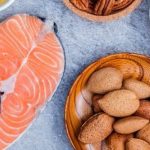 In years since 2012, all drivers licensed in Florida have been required to carry what is known as PIP coverage. That stands for Personal Injury Protection.
In years since 2012, all drivers licensed in Florida have been required to carry what is known as PIP coverage. That stands for Personal Injury Protection.
This much-needed rider allows you to get the medical help you may need following an accident regardless of fault or if the other party has auto insurance.
Unlike some other states, there are time constraints within which you are able to seek treatment for accident-related injuries.
In Florida, you have just two weeks (14 days) after an accident to start treatment. If you do visit a doctor’s office or emergency clinic during this time frame you automatically lose your ability to use your PIP coverage.
If you are not taken by ambulance from the accident scene please follow up with your doctor and your chiropractor as soon as possible.
Every policy issued in Florida carries the full $10,000 worth of PIP coverage, even though, in some situations, you may only be entitled to $2500, a reduced benefit. To access the full amount you must receive a determination of emergency medical condition. Many insurance companies will argue with you that you do not have a serious condition. Restrictions have been unjustly placed which discriminate against chiropractic physicians. because of this, we have to refer you out to another health care provider simply to get that determination on file.
If your auto insurer stops payment after $2500 for the $10,000 in benefits for which you pay a premium for, you may continue to obtain treatment with our office under a letter of protection if you are represented by a lawyer and are filing a claim for recovery against the at-fault driver.
DID YOU KNOW?: You can install our mobile app on your smartphone! With just a push of a button, we will know you need medical assistance and get you in as soon as possible. http://drkasters.com/web-app-download/
If you are in an accident – don’t worry about the specifics right away. Call our office at 239-332-2555 and come in for a post-accident evaluation, treatment plan, and adjustments. Let’s get you on the road to health and we will file all the paperwork for you.
For More Information on PIP Laws in Florida:
The Florida Office of Insurance Regulation can assist you if you experience a problem or have a complaint. You can submit a complaint online by going to their consumer services website at https://apps.fldfs.com/eservice.
Chiropractor | Nutritionist in Ft Myers, FL.
 Chiropractic care is a safe, alternative treatment when applied appropriately. Chiropractic treatments help in dealing with the symptoms of many conditions. Are you going to wait for your symptoms to be felt, or are you going to prevent it as soon as possible?
Chiropractic care is a safe, alternative treatment when applied appropriately. Chiropractic treatments help in dealing with the symptoms of many conditions. Are you going to wait for your symptoms to be felt, or are you going to prevent it as soon as possible?
Dr. Jason B. Kaster, a chiropractor, and nutritionist in Fort Myers can help you and your family achieve their optimal health.


 Sugar hits the pleasure center of the brain in the same way that hard drugs do. This makes refined sugar extremely addictive and very hazardous to your health. Moderation is key and elimination even better.
Sugar hits the pleasure center of the brain in the same way that hard drugs do. This makes refined sugar extremely addictive and very hazardous to your health. Moderation is key and elimination even better.
 Painful joints make even the most simple movements unbearable at times. In cool weather and rain, they ache even more when you have arthritis.
Painful joints make even the most simple movements unbearable at times. In cool weather and rain, they ache even more when you have arthritis.
 Fruits and Vegetable additions to your daily meals are one of the quickest ways to add needed nutrients to your diet plan.
Fruits and Vegetable additions to your daily meals are one of the quickest ways to add needed nutrients to your diet plan.
